Though the title is intentionally a bit tongue-in-cheek, the results of a recent study published in the scientific journal PLOS ONE suggest that not only are hatchery-reared steelhead less intelligent than their wild counterparts but that they exhibit defects in the structure and composition of their lateral lines. These two findings are a likely explanation for why hatchery-reared juvenile steelhead exhibit a significantly reduced survival rate to adulthood than wild born steelhead do.
If you're at all familiar with fish biology, you've likely heard of the lateral line. If you haven't, the lateral line is sensory organ system that is arguably more important to a fish than any other aspect of its biology. The reason for this is that the lateral line of a fish is its primary tool for sensing and reacting to its environment. Cell clusters, called neuromasts, located along a fish's lateral line allow the fish to sense changes in stream flow rate, direction and other hydrodynamic fluctuations. It plays a crucial role in a fish's ability to catch prey, avoid predators, interact socially (including spawning) and communicate with other fish and orient and hold station in currents.
As noted, the study -- led by Andrew D. Brown at the University of Washington -- demonstrated that hatchery reared fish exhibit morphological defects in their lateral lines that are primarily characterized by a reduction in the number of sensory cell clusters (neuromasts). The study also exhibited findings that showed hatchery-reared steelhead to have smaller brains as well as poorer hearing than wild steelhead.
The obvious result of these three findings is that hatchery fish have a reduced capacity to sense and react to their environment, which degrades their ability to survive and reproduce.
But why do hatchery steelhead possess these defects? The study suggests a number of possible contributing factors, both of which result directly from their hatchery rearing environment. According to the study, neuromast formation is thought to be dependent on "adaptation to the local hydrodynamic environment" and given that hatchery environments typically feature constant and low-velocity flows, those fish would have less stimulus to develop current-sensing neuromasts. Perhaps more likely is the fact that the type of neuromast which hatchery-reared steelhead particularly lack, SN (superficial neuromasts), protrude from a fish's skin and scales and are candidates for removal via tissue damage in hatchery environments from which fish regularly emerge with tail and fin deformations resulting from the close quarters in which they are raised.
While it is comforting to think that lateral line defects in hatchery-raised fish may be explained by the physical environment in which these fish develop, rather than having their roots in the fish's genes and thus able to affect wild steelhead through their introduction into the gene pool, that may not assuredly be the case. As the study notes, "given that fish possess the ability to regenerate neuromasts, it seems unlikely that reduced SN number in hatchery fish would be purely attributable to acute trauma and tissue damage."
You can read the full study here.




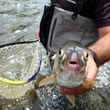
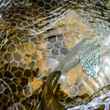
















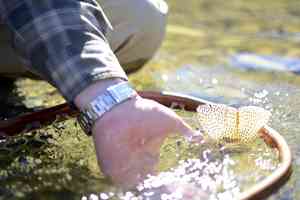
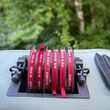


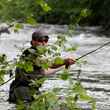

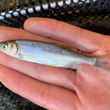

Comments
DDon replied on Permalink
SHOCKER
The only good place for a hatchery steelhead is on the dinner table.
Ben James replied on Permalink
Yeah, not exactly surprising news to those of us with a brain in our heads.
No matter, tribal influence and "good ol' boy" guide culture will keep hatchery steelhead on the menu for our lifetime at least. It's the american way: what's best for me is what's best for everybody, even if I don't know what's best for me.
Chris replied on Permalink
Now... will we have the balls to start getting rid of hatcheries, particularly where steelhead are native, in the Northwest?
Gary Crehan replied on Permalink
Did someone shoot you in the brain when you were younger? Without hatcheries, we do not have fish to catch. Stupid or not, we will never be able to take native fish out of the river, not until the population reaches the multi-millions that were here before dams. You are obviously not a fisherman. We need MORE hatcheries, not fewer.
Ken James McLeod II replied on Permalink
What a bunch of BS! I've been steelhead fly fishing for almost 60 years plus, probably caught, kept, released more than most men could or would in 3 life times, you and your cronies are of forked tongue. There is no significant science to say otherwise that hatchery steelhead are the main cause of any significant decline relating to wild/native run steelhead: summer or winter. Again, your anti-hatchery rhetoric is all very misleading when it comes to steelhead in general.
Kasey Barney replied on Permalink
I understand where you are conning from but, there is a lot of study's on steelhead genetics, and it is shown that hatchery steelhead are less fit than wild fish but it is hard to tell. Also unlike salmon steelhead are not likely to stray from there natal habitat so in all reality there is not wild steelhead in any system with a hatchery.
Gary Crehan replied on Permalink
HERE HERE. CAN'T AGREE MORE. THIS IS WHAT WE'RE UP AGAINST. IDIOTS
Pages